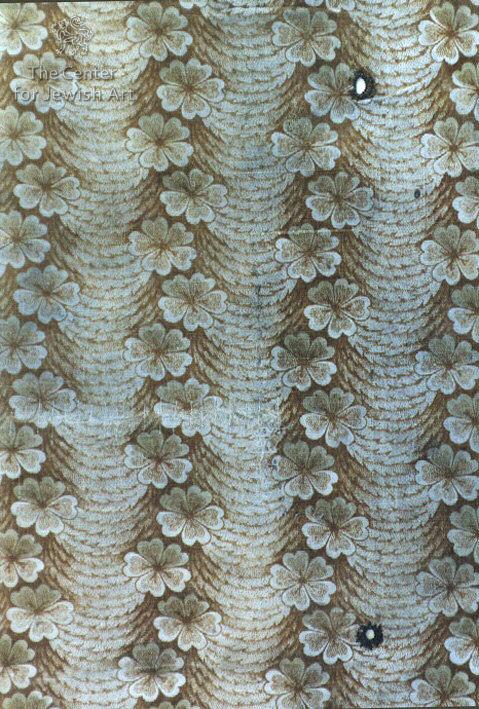Obj. ID: 39364 Tallit Katan, Czech Republic, circa 1875

sub-set tree:
The following description was prepared by William Gross:
The tallit katan ("small tallit") is a fringed garment traditionally worn either under or over one’s clothing by Jewish males. It is a poncho-like garment with a hole for the head and special twined and knotted fringes known as tzitzit attached to its four corners. The requirements regarding the fabric and fringes of a tallit katan are the same as that of a full tallit. Generally a tallit katan is made of wool or cotton.
This is an example of the type of Jewish ritual item often found in the Genizas of central Europe. Because it was a piece of clothing, it often became worn out, but as a holy item it could not be thrown away, but rather put into the Genizah of the local community. This example, made from 19th century printed floral pattern cotton, comes from a Genizah in Moravia.




